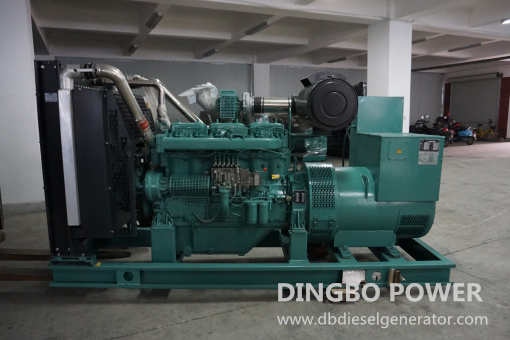Diesel generators generate a lot of heat during operation and the cooling systems can prevent the engine from overheating by circulating coolant throughout the system. Coolant is one of the key components of the generator cooling system. To ensure your equipment work smoothly, it’s important to use proper coolant. In this article, we’ll explore everything you need to know about coolant for diesel generator.
Coolant is a fluid used in the radiator to remove the engine's heat. Coolant for diesel generator can regulate the temperature of the engine. It prevents the engine from freezing in cold weather and provides protection against boiling in summer. It is common that coolant and anti-freeze are used interchangeably. However, antifreeze is an additive mixed with water or coolant. Coolant is technically a mixture of multiple components, which is composed of purified water and anti-freeze or other additives which serve to prevent erosion and other issues. It means that antifreeze is a type of coolant.

Typically, antifreeze, a 50/50 mix of antifreeze and water, is suitable for diesel generators used in places where temperatures down to -40°F. For those generator sets used in areas where freezing is impossible, use of antifreeze is not required and rust preventive coolant can be used to provide corrosion protection.
Many customers, especially those in the tropics or subtropical areas, wonder if they can put water into their radiators. Water is the most common coolant used in diesel engines. However, the water used for engine coolant should be clean and free of deposits or scale forming substances. In addition, the water should be slightly alkaline, with a pH between 8 to 9.5. Generally, de-mineralized water or soft water is most frequently used for diesel generators.
Please note that water alone presents the possibility of corrosion, mineral deposits, and freezing. It’s not suggested that you use it as the coolant all the time to prevent the engine from overheating. If water is used, you have to remember to discharge the water from the radiator and the engine body after the water temperature drops below 60℃ after the shutdown. If circumstances allow, we recommend you use diesel generator coolant to dissipate heat and prevent the engine from freezing, boiling and corrosion. Coolant itself is superior to water in terms of operating conditions because it won’t freeze in cold weather conditions and resist boiling in hot weather. It can circulate through the system effectively to cool the engine and protect your equipment from damage whether in summer or winter.
The coolant may degrade, leak or be contaminated over time. When its quality deteriorates or the coolant levels become too low, it can result in overheating, corrosion, and performance degradation. To prevent costly repairs and ensure the proper operation of your diesel generator, it’s necessary to follow the manufacturer’s recommendations to change and replenish the coolant regularly. A timely coolant refill ensures that the engine remains properly cooled and protected.
How to check the coolant level? First of all, make sure the generator is turned off and has cooled down to avoid any potential accidents or burns. Then locate coolant reservoir and look at the coolant level indicator. If the coolant is below the recommended level or close to the low mark, you need to add coolant to the generator immediately.
Read more about: Precautions for the Use of Diesel Generator Set Coolant
When the coolant level is low, you need to replenish the coolant to the radiator. Keep in mind that NEVER add coolant to a hot radiator. Before filling coolant, make sure the generator is shut down and the radiator is cooled down. Remove the coolant reservoir cap carefully. Slowly pour the appropriate coolant into the reservoir until it reaches the recommended level. When the filling is complete, tightly close the radiator cap to prevent any leaks or evaporation of the coolant.
It’s essential to regularly check and maintain the coolant level in your diesel generator set. Don’t hesitate to reach out for any further information or assistance regarding to diesel generator coolant. Contact us at dingbo@dieselgeneratortech.com, and we will gladly help you.
Previous: What are the benefits of a ride-on toy car for children?
Next: MV Rubber Insulated Cable For Shield Tunneling Machine
Copyright:@2020-2021
Comments Please sign in or sign up to post.
0
0 of 500 characters used